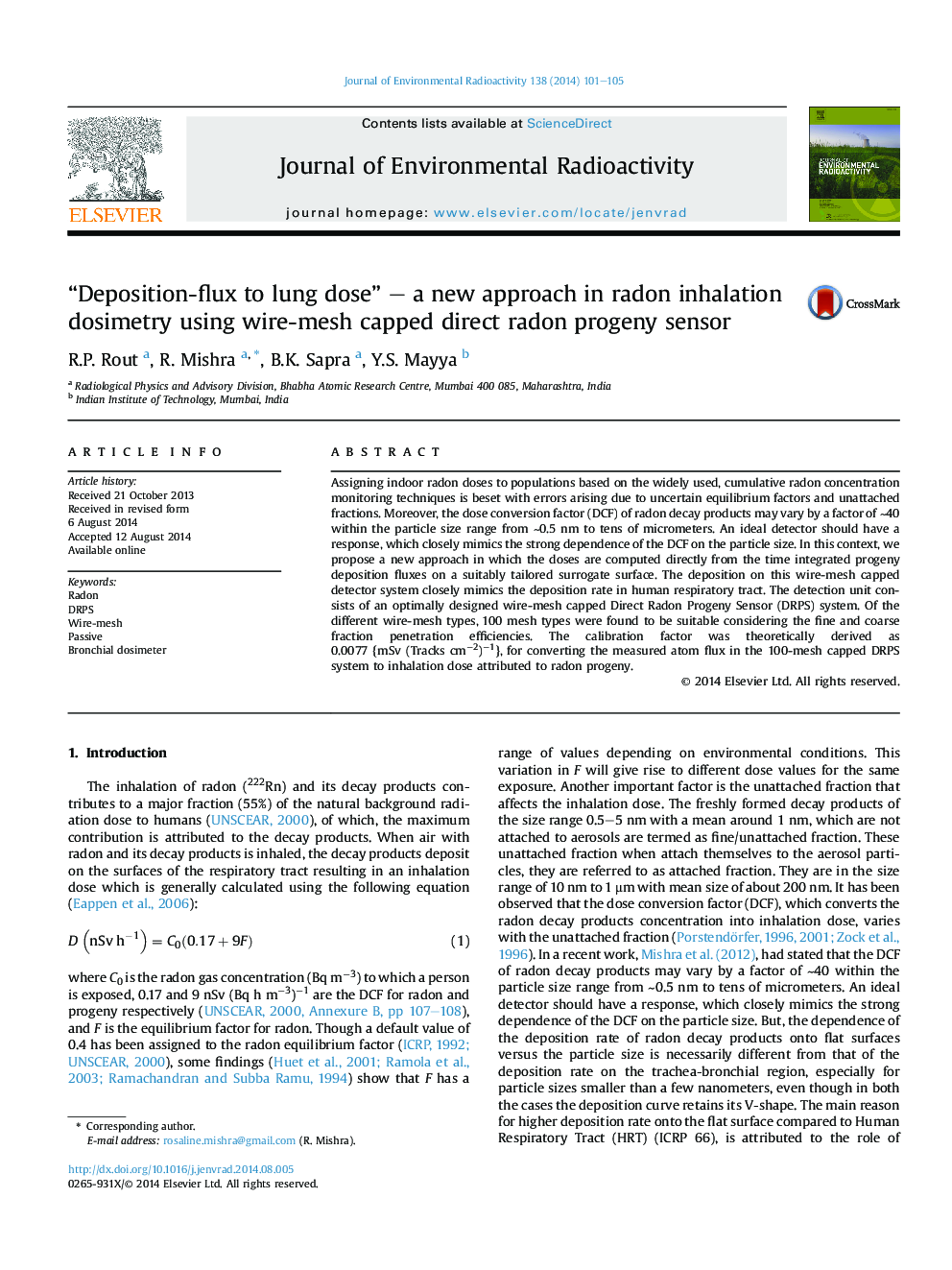| Article ID | Journal | Published Year | Pages | File Type |
|---|---|---|---|---|
| 8082737 | Journal of Environmental Radioactivity | 2014 | 5 Pages |
Abstract
Assigning indoor radon doses to populations based on the widely used, cumulative radon concentration monitoring techniques is beset with errors arising due to uncertain equilibrium factors and unattached fractions. Moreover, the dose conversion factor (DCF) of radon decay products may vary by a factor of â¼40 within the particle size range from â¼0.5 nm to tens of micrometers. An ideal detector should have a response, which closely mimics the strong dependence of the DCF on the particle size. In this context, we propose a new approach in which the doses are computed directly from the time integrated progeny deposition fluxes on a suitably tailored surrogate surface. The deposition on this wire-mesh capped detector system closely mimics the deposition rate in human respiratory tract. The detection unit consists of an optimally designed wire-mesh capped Direct Radon Progeny Sensor (DRPS) system. Of the different wire-mesh types, 100 mesh types were found to be suitable considering the fine and coarse fraction penetration efficiencies. The calibration factor was theoretically derived as 0.0077 {mSv (Tracks cmâ2)â1}, for converting the measured atom flux in the 100-mesh capped DRPS system to inhalation dose attributed to radon progeny.
Related Topics
Physical Sciences and Engineering
Energy
Nuclear Energy and Engineering
Authors
R.P. Rout, R. Mishra, B.K. Sapra, Y.S. Mayya,
